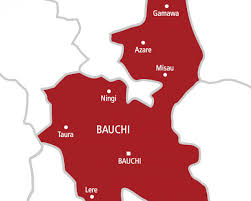Traditional Nigerian art works produced by the people before any contact with modern Western civilization are unique and aesthetics, and can only be identified and associated with the people of Nigeria.
Nigeria has a large land area from the rain-forest in the South to the Savannah in the North with different plants and minerals used for carving of objects (traditional arts). The people of Nigeria have learnt to utilize these resources for designs, art works and construction of products that are in great need by the society. Some of these art craft production areas are as follows:.
Igbo-ukwu: Igbo-ukwu bronze is one of the richest bronze treasures in Nigeria discovered by a worker hired to dig a water cistern by one Isaiah Anozie in 1938, 30km South-East of Onitsha, Anambra State. He dug up a highly decorative bow and further discovered several other objects. In 1957, Professor Thurston Shaw on the invitation of Federal Department of Antiquities of Nigeria scientifically excavated the site and found bronze roped pot, male and female figures that are sometimes combined with insects and reptiles as decorative motif, a shell surmounted by an animals and many more. Igbo-ukwu bronze, dated 9th Century, were mostly ritual and ceremonial objects considered older than those of Ife and Benin that 15th Century.
Benin Art: Benin art has something in common with Ife art. Benin is in Edo State about 100Km South-East of Ife with a sacred king worshipped as a god. Their works came in many forms, namely in bronze stone, wood, ivory and terracotta. The Oba of Benin and Oni of Ife developed diplomatic relation. All bronze casting and ivory carving were in the service of the Oba, making Benin art of royal one.
Ife Art: Ife is a town in Osun State, Nigeria. Ife art consists of bronze and terracotta heads figures and some quart stool. The faces of Ife art are realistic. They showed mobility of royalty.
Nok Art: Is between 500BC. Nok town is located in Kaduna State, Nigeria. Nok was a mining village where art works were found in 1943 by tin miners. The works are sculptures done in terracotta’s (baked clay works are known as terracotta). Nok-terracotta are mostly heads and animals’ figures. Some Nok arts are highly abstract while some figures show skill in naturalistic presentation of images.
Ekoi and ikom Monoliths: Between 200 – 1850AD, the Ikom monoliths are group of stone sculptures found in small area around Ikom in Cross River State of Nigeria, inhabited by Okoi people who live is scattered villages, headed by a Chief Priest known as Xitoom. According to oral history, it is the ancestors of Ekoi people that put the stones where they are.
Tsoede Arts: Tsoede arts is about 16th Century, the bronze are referred to as the tsoede bronze because oral tradition says that the founder of the Nupe Kingdom king Tsoede who escaped from Idah in a bronze Canoe, distributed these bronzes on his way to founding the present Nupe kingdom.
Esie Arts: Esie is a small town near Ilorin in Kwara State. Esie is known for stone figures found in a small bush in Esie. These stone figures number about 800 pieces and were the largest collection of stone images in Esie and are sculptural pieces. They are different and made up of male and female figures. Some are facing sanctification, some stand on short legs while others sit on mushroom shape stools holding objects in their hands. Most of these figures wear bracelet and necklace. Some of the female figures kneel in front of water-pots. These figures were probably used for funeral or worship.
Jarumi Yakubu Rebecca,
National Commission for Museum and Monuments, Abuja.




